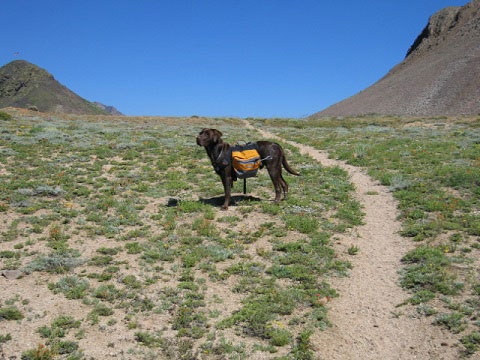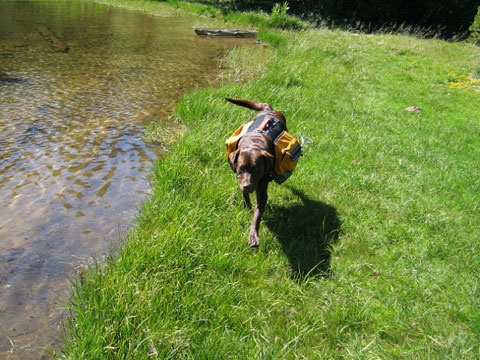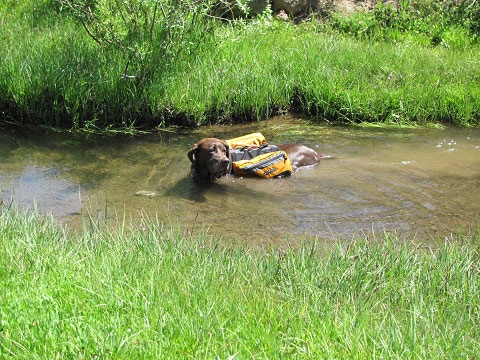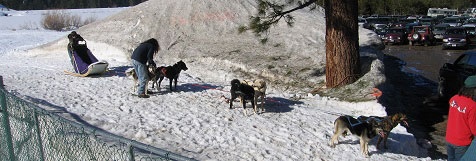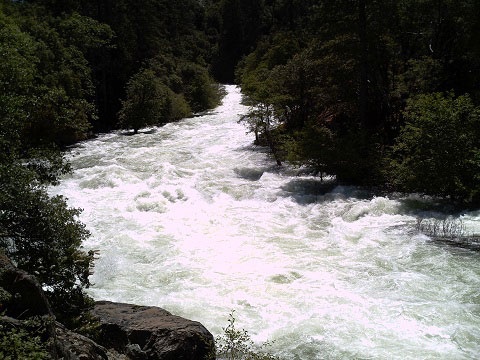A Happy Dog is a Panting Dog
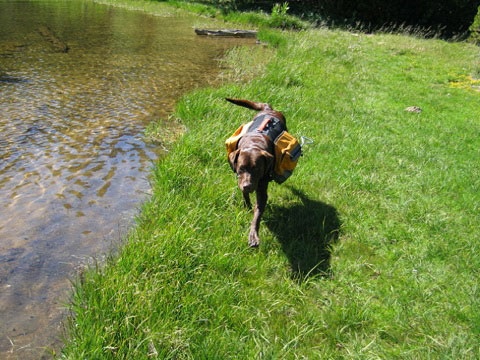
by Phil "Flip" Akers
5-3-2017
Website
Bigfoot’s number one pet is the wolverine but for us humans it’s the canine. Americans are projected to spend $60 billion this year on pets! A large portion of this goes to dogs. We all love our dogs and generally take them everywhere we can. There are many classes: working dogs, service dogs, rescue dogs, therapy dogs, competition dogs, hunting dogs, fishing dogs (yes, fishing dogs such as Portuguese water dogs, a proud pedigree and heritage of fishing related traits including herding fish into nets), and just good ole family companion dogs. They all have one thing in common; a devout desire to please and do the right thing, all while providing countless hours of enjoyment, entertainment, and laughter.
Because of their heightened senses of smell, hearing, and visual acuity, outdoor adventurers are blessed with imponderable benefits by having pooch along on outings. But we are the smarter species and we have to provide preparedness and protection for them.
From walks, runs, swims, hunts, hikes, backpacks, or competitions, make sure your dog is in proper condition for the activity you intend to do. Just like us they need to build up their strength and endurance. For backpacking, to maintain their condition, periodically have them wear a pack around your property and on local walks. The amount of weight a dog can carry varies based on the bred and age of the dog…and who you talk to. From vets, dog clubs, hunting clubs, and contacting differing online resources, I have been told anywhere between five and thirty percent of their body weight. Nobody is on the same page here. From experience I can say a well fit larger breed dog in its prime can carry 20-25 percent of their weight no problem. Be in tune with your dog, be sensitive to post-activity soreness, and build up to the maximum weight at home or on day trips, instead of on the wilderness trail. Do not over weight your dog!
Backpacking dogs can carry their own food, water, treats, collapsible water/food containers, and anything else to round out the load. In addition to carrying all of his stuff, I usually have my dog carry the water filter and perhaps a couple other similar items. He only carries his own water if traveling long stretches of trail without a water source. If your dog is domesticated to the point of everyday drinking of potable water meant for human consumption, it can be susceptible to giardia and other waterborne diseases. But I wouldn't worry about things unless in an area that is repeatedly trampled by range cattle.
Don’t be frugal or skimp when choosing a pack for your dog. Otherwise you could end up with an awkward fitting, uneven load, despite equal weight distributed on each side. Before purchasing a pack I did a lot of research and have only used one pack, the REI Adventure Dog. I’ve been very pleased with the terrific fit, the design to minimize shifting, breathable mesh harness, grab handle, and grommet drain holes in the bottom of the panniers. Be sure to double-bag the dog’s food if hiking with a water dog.
Start obedience training as soon as possible. Make encounters with strange people and strange pooches a big part of this training. Introduce your dog to stock. If your dog cannot stay within earshot and obey commands then leave them at home and give training more time. There are too many distractions such as other people and their pets, stock, wildlife, and enticing smells. Train and practice at home, local fields and trails. Work them out somewhat before getting serious with the training, get the early excitement out of them so they can focus better.
Traveling in volcanic and granite talus areas can be damaging to dog’s pads. You can purchase booties specifically designed to protect dog’s pads but good luck, I have never owned a dog that will tolerate wearing them. Our running dogs (fox and coyote dogs) suffered more severe pad damage than our tree dogs (raccoon and bear dogs). I can testify that Tuf-Foot is a great product for treatment of sore or damaged pads.
Consider the dog your liability in terms of first aid. Before backpacking the wilderness areas with your dog, make sure it is up-to-date with all vaccinations including giardia and rabies. The dog should also have been treated for heartworm. Consult your vet. Outside of this just be able to treat your dog for their most common injury which is puncture wounds mostly due to sticks. Having ran and hunted dogs for many years, I can say that punctures occur often from pine knot sticks protruding from deadfalls. Carry Benadryl and aspirin (never give them Tylenol or Ibuprofen), iodine, and antibiotic ointment. Flush a puncture wound with a ten percent iodine-to-water solution, then it is important that the puncture wound get air. But it is better to cover the wound that have them constantly licking it…maybe cover it at night and let it air during the day when moving.
Rattlesnakes are a concern when traveling the backcountry with pooch. They are far more likely than us to not only get bit but die from a bite. Just like humans, bite prevention is the best practice. If your dog is rattlesnake bitten, realize this is a life threatening situation that requires immediate veterinarian care, and the antivenin is quite costly (~ $800 a vile). After a week of sickness and severe swelling, I have seen large breed dogs survive copperhead bites untreated, but I have no experience with a dog being rattlesnake bit and allowed to go untreated. Two excellent preventive measures for your dog is the canine rattlesnake vaccine and rattlesnake avoidance training.
Comprised from the venom of western diamondbacks, the canine rattlesnake vaccine will both delay and lessen the severity of snakebite symptoms…less pain and swelling, far less tissue damage, faster recovery, and most importantly fewer deaths. But it is no guarantee that all will be fine. Smaller breed dogs will always have a much harder time fighting equal doses of venom, and large breed dogs can also suffer greater negative consequences if there are multiple bites, if the bite is intravenous, or very near vital organs. Even if your dog was given the canine rattlesnake vaccine you should still get them to a vet as soon as possible. Some dogs produce more antibodies than others and thus have weaker symptoms and recover much faster.
You can also take your dog to rattlesnake avoidance training. Many different vets, clubs, and even freelance types offer this training and their techniques vary. Some use shock treatment while others do not. Do your research and decide for yourself. I can only testify that avoidance training utilizing muzzled rattlesnakes with mild shock works great.
Whatever your outdoor activity with the pooch, enjoy the training and all times spent with them. Be mindful to other user groups you might encounter. Work them hard at their skill set, they strive for activity and positive communication. Remember, a happy dog is a panting dog.
Phil "Flip" Akers is a diverse angler and outdoor adventurer. For over 25 years he has backpacked, packed llamas and fly-fished the Sierra Nevada and Cascade mountain ranges, venturing into the farthest reaches of our wilderness areas pursuing quality trout and solitude. He enjoys sharing his experiences including tips, techniques, outdoor cooking recipes, and storytelling. He is certified in wilderness first response and rescue including swiftwater rescue, technical rope and technical animal rescue. Phil Akers can be reached at akers209@att.net.
Photos
More Reports
Too much water too early
Bullards Bar Reservoir
4-28-2017
Emerging from the drought plagued years in Northern California, we are now in a situation where we have too much...... Read More
Shasta Trout Derby May 6-7
Shasta Lake
4-26-2017
The Kokanee Power sponsored Shasta Lake Classic Team Tourney Trout and Salmon Tournament will be held this May 6 and...... Read More

